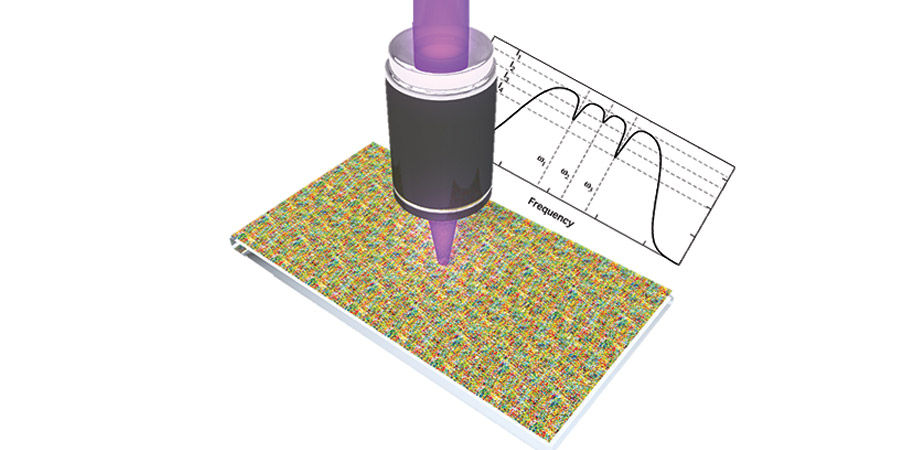The growing demand for ultrahigh-density optical data storage

Dramatic increases in data storage capacities are urgently needed as they are being outpaced by exponential growth in data generation, driven by use of the internet, social media, and cloud computing. New, long-term data storage solutions that extend beyond traditional magnetic hard disk drives or tape, and solid-state drive (SSD) storage are a must to overcome this bottleneck.
Optical techniques are widely believed to hold the key to increasing data storage capacities. With requirements of petabyte (PB) to exabyte (EB) storage capacities on the horizon, current optical disc technologies are unlikely to represent a viable option for high-capacity long-term archival storage. To meet the requirements of massive data warehouses, where magnetic-based storage technologies are still used, optical data storage in the mid to high terabytes (TB)- or even PB-per-device will be required. Optical data storage is particularly promising because it allows for multidimensional data storage.
One approach to boosting data storage capacities is 3D or multilayer optical data storage. As the name suggests, it involves information being recorded and read out in 3D structures such as multilayer discs, cards, crystals, or cubes. The writing and readout of information is typically achieved by focusing one or more laser beams into the 3D medium. Due to the volumetric nature of the storage medium, the laser is required to pass other points before writing or reading the desired datum. This means that a nonlinearity is typically required for both the write and readout functions so that only a single local point at a given time is addressed.
At the University of Southampton, United Kingdom, 5D optical data storage technology has been demonstrated. It stores information by encoding data not only in three spatial dimensions, but also by two parameters relating to birefringence that are manipulated by the polarization and intensity of a femtosecond laser focused inside a glass medium. The method could see hundreds of TBs stored on a disc with long-term thermodynamic stability. Improvements in the data read speeds are required, however, to improve the technology's commercial prospects. What's more, applications might be limited due to requisite high-power laser systems and the lack of data rewritability.
Another example—this time involving hybrid glass containing gold nanorods—comes from the Royal Melbourne Institute of Technology, Australia. In a novel approach using the surface plasmon resonance properties of the gold nanorods, information is to be stored and read out by using different polarizations and wavelengths of light. But this technique that could see tens to hundreds of TBs stored in an optical medium also suffers from lack of rewritability and a requirement for high-power lasers. Still, if the difficulties can be overcome, this and other multidimensional optical data storage technologies have the potential to dramatically increase optical disc capacities by several orders of magnitude, especially for archival storage applications.
Optical data storage is also suited to multilevel encoding techniques in which storage capacity can be significantly increased by writing multiple bits per point using different discretized signal intensity levels. Multilevel data storage also increases the data readout rate as several bits are read out simultaneously, which is very important for big data sets. Multilevel encoding has been demonstrated in several polymers, but suffered from photobleaching resulting in partial erasure of the data. These techniques have also been rather limited in the number of bits that could be stored.
In an emerging technique from the University of South Australia and the University of New South Wales, data can be stored using unique properties of inorganic phosphors. The optical data storage mechanism entirely revolves around modifying the luminescence spectral fingerprint of nanocrystalline phosphors with the burning of spectral holes at different wavelengths and discretized depths.
These changes to the luminescence spectrum involve exposing the nanocrystalline phosphors to certain wavelengths of light, which allows dips in the spectrum to be created in the frequency domain. These dips can be discretized in depth to store multiple bits at multiple frequencies at room temperature.
This approach has potential to be rewritable and to use low-power lasers. The technology also doesn't require cryogenic temperatures, instead allowing spectral hole burning at room temperature making data storage with this approach significantly more practical. By dispersing such nanocrystalline phosphors into 3D media such as glass blocks, storage capacities approaching hundreds of TBs to PBs can be predicted.
These examples represent some of the many state-of-the-art optical data storage techniques emerging in the literature. They showcase the potential of optical data storage in solving the massive data storage bottleneck that society faces. It remains to be seen which technologies reach the market and are economically viable, but with large companies such as Google and Facebook taking an interest in optical discs for archival data storage applications, the optical disc is set to make a comeback in commercial applications. If, indeed, tens- to hundreds-TB optical discs can be realized economically, consumer applications are likely to follow.
Nicolas Riesen is a senior research fellow at the University of South Australia, a founder of Modular Photonics Pty Ltd., and an affiliate of TOMdisc.
| Enjoy this article? Get similar news in your inbox |
|



